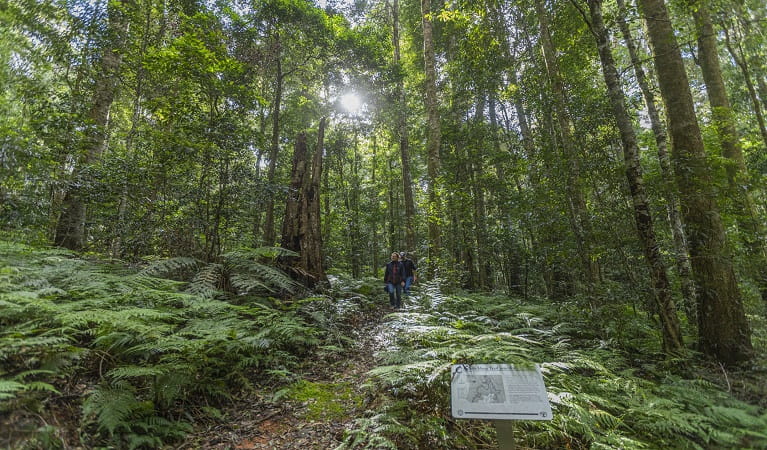Werrikimbe National Park
Overview
Werrikimbe National Park, near Port Macquarie and Walcha, offers walks through World Heritage-listed Gondwana rainforest, camping, picnicking, scenic drives and 4WD trails.
Read more about Werrikimbe National Park
If you’re looking to get away from the crowds and explore pristine wilderness, then Werrikimbe National Park is the place for you.
Part of the Gondwana Rainforests of Australia World Heritage Area, it’s a unique natural landscape with ancient rainforest, tall eucalypt forests, pristine rivers, cascading waterfalls, rugged escarpment and deep gullies. In spring, the forests and heathland burst with colourful wildflowers.
Visit for the day, or spend a few more enjoying the tranquility of secluded campgrounds, walking tracks, and picnic areas.
With over 120 bird species, birdwatching is a fantastic activity to enjoy here. As you spy lyrebirds in the rainforest, you’ll find a range of other forest birds such as eastern yellow robins and rufous fantails. If you’re lucky, you might spot rare bird species like olive whistlers, rufous scrub-birds and sooty owls.
Local alerts
For the latest updates on fires, closures and other alerts in this area, see https://www.nationalparks.nsw.gov.au/visit-a-park/parks/werrikimbe-national-park/local-alerts
Contact
- in the North Coast and Country NSW regions
Werrikimbe National Park is always open but may have to close at times due to poor weather or fire danger.
-
-
Port Macquarie office
02 6588 5555 for general enquiries only, no bookings.
Contact hours: Monday to Friday, 9am to 4.30pm. - 22 Blackbutt Road, Port Macquarie NSW 2444
-
Email: npws.hastingsmacleay@environment.nsw.gov.au
-
Port Macquarie office
-
-
Walcha office
02 6777 4700
Contact hours: Monday to Friday, 8.30am to 4.30pm. - 188W North Street, Walcha NSW 2354
-
Email: npws.nea@environment.nsw.gov.au
-
Walcha office
Visitor info
All the practical information you need to know about Werrikimbe National Park.
Map
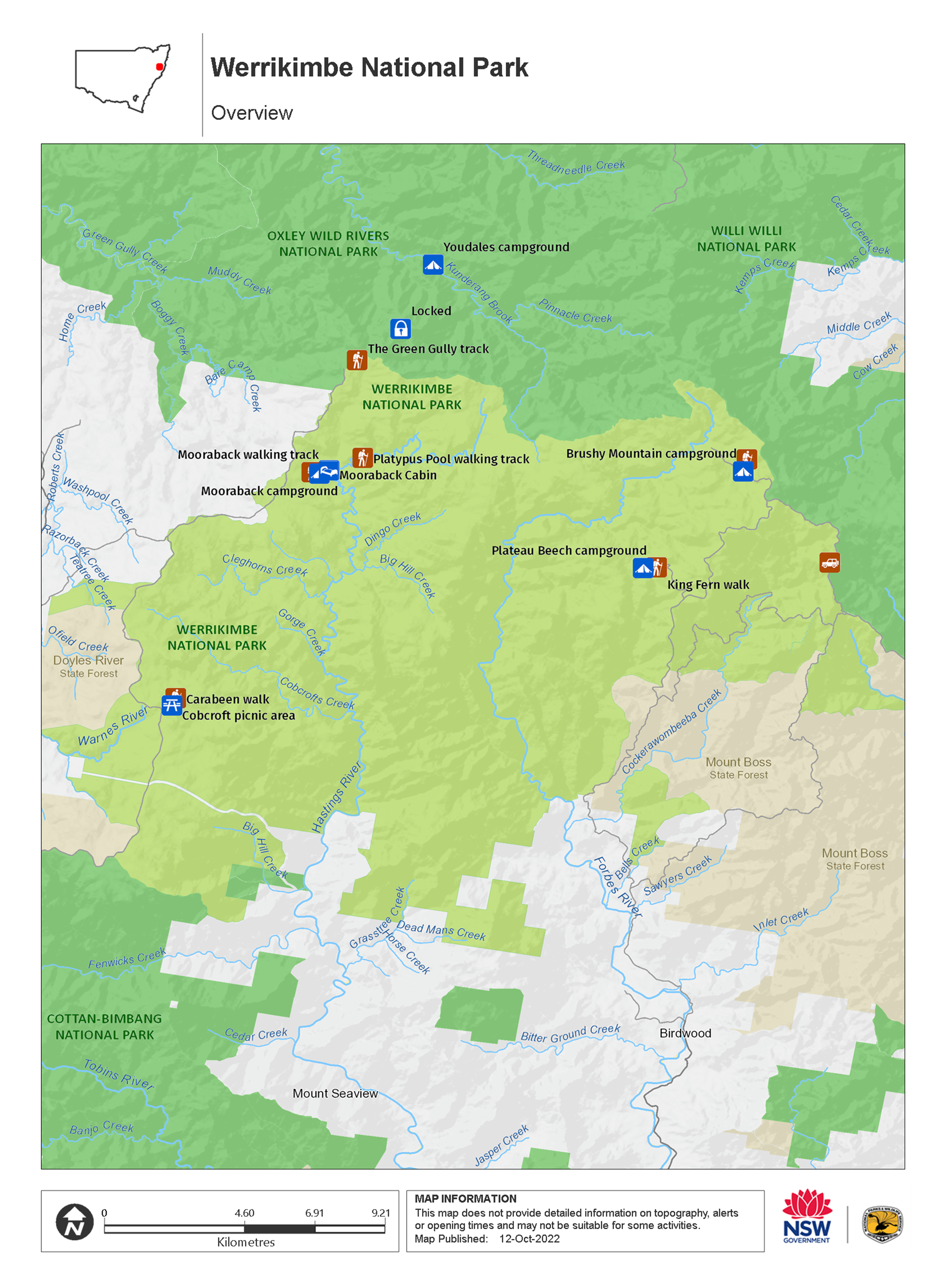
Map legend

Getting there and parking
Get driving directions
From Wauchope:
- Drive towards Beechwood on Beechwood Road
- After approximately 6.5km, turn onto Bellangry Road and follow for approximately 18km to Bellangry.
- After Bellangry, the road is unsealed and becomes known as Hastings Forest Way.
- Follow Hastings Forest Way for about 30km through the forest to the park boundary, then continue on another 8km to the junction with Cockerawombeeba Road in the eastern precinct of the park.
Parking
- Carabeen walk See on map
- King Fern walking track See on map
Road quality
Please note that access to Werrikimbe National Park is on roads managed by other land holders. Road conditions in these locations may not be suitable for 2WD vehicles.
- Mixture of sealed and unsealed roads
Vehicle access
- Most roads suitable for 2WD vehicles (no long vehicle access)
Weather restrictions
- 4WD required in wet weather
By bike
Check out the Bicycle information for NSW website for more information.
By public transport
There are no public transport options directly to Werrikimbe National Park. For information about public transport options to nearby Wauchope, visit the NSW country transport info website.
Best times to visit
There are lots of great things waiting for you in Werrikimbe National Park. Here are some of the highlights.
Autumn
Bathe in warm days and huddle around the campfire on cool nights at one of the remote campgrounds.
Spring
See the bushland burst with colour as the spring wildflowers attract a range of birds.
Summer
Escape the crowds and the coastal heat and enjoy walking in cool temperate rainforest.
Winter
Experience crystal clear days and crisp early morning frosts. Listen out for the night-time territorial calls of large forest owls from your tent.
Weather, temperature and rainfall
Summer temperature
Average
16°C and 29°C
Highest recorded
42.2°C
Winter temperature
Average
5°C and 20°C
Lowest recorded
-5.1°C
Rainfall
Wettest month
February
Driest month
July
The area’s highest recorded rainfall in one day
706.8mm
Facilities
Toilets
- Brushy Mountain campground
- Carabeen walk
- Mooraback Cabin
- Mooraback campground
- Plateau Beech campground
Picnic tables
- Brushy Mountain campground
- Carabeen walk
- Mooraback Cabin
- Mooraback campground
- Plateau Beech campground
Barbecue facilities
Drinking water
Showers
Electric power
Maps and downloads
Prohibited
Pets
Pets and domestic animals (other than certified assistance animals) are not permitted. Find out which regional parks allow dog walking and see the pets in parks policy for more information.
Smoking
NSW national parks are no smoking areas.
Nearby towns
Wauchope (65 km)
Wauchope is great base for exploring nearby national parks that are part of the Gondwana Rainforests of Australia World Heritage Area. Follow the Hastings Forest Way to Werrikimbe National Park, a rugged wilderness of outstanding beauty spread with short and long walks. Willi Willi National Park is a rainforest mountain park with three beautiful walking tracks that follow the river and lead to a sparkling waterfall.
Walcha (90 km)
Walcha is the gateway to some of the best adventure experiences in Australia. Expect gorges, rainforests, waterfalls and wilderness. Enjoy helicopter flights, 4WD tours and fishing, as well as guided bushwalks in some of Australia's most rugged terrain.
Port Macquarie (98 km)
Vibrant Port Macquarie is surrounded by beautiful waterways - the Hastings River, canals, creeks, bays and the Pacific Ocean. The city also has a five-star collection of golden-sand beaches stretching from Port Macquarie Beach to Town Beach and north along the 16-km swathe of North Beach.
Learn more
Werrikimbe National Park is a special place. Here are just some of the reasons why:
World Heritage wonder
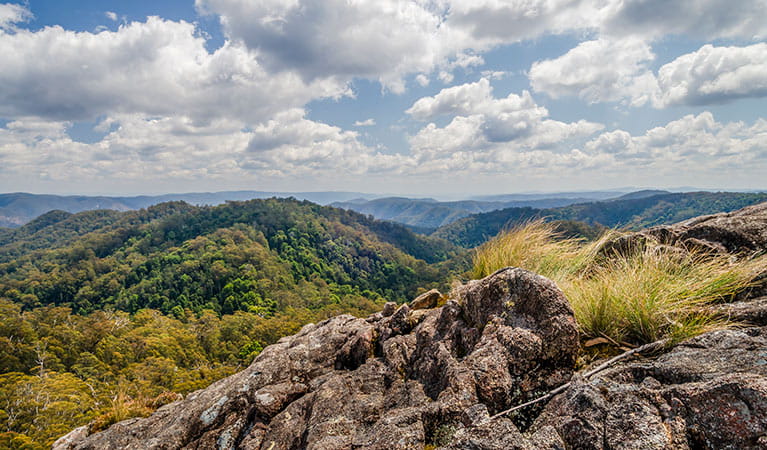
The rainforests in Werrikimbe National Park are part of the Gondwana Rainforests of Australia World Heritage Area; the most extensive strip of diverse rainforest anywhere on earth. This World Heritage Area is a direct window into the past and the future, providing a link to the ancient pre-human world and an irreplaceable record of life on our planet. Explore the rainforest on one of the park's many walking tracks, like King Fern walking track from Plateau Beech campground. Discover ancient Antarctic beech trees and listen for the lyrebird whose mimicking calls ring out through the rainforest.
- Carabeen walk Discover World Heritage Gondwana Rainforest on Carabeen walk, in Werrikimbe National Park. This short, family-friendly walk loops past majestic yellow carabeen trees, near Walcha.
- King Fern walking track King Fern walking track in Werrikimbe National Park near Wauchope is a great introduction to World Heritage-listed Gondwana Rainforests. A 2km loop, it also offers waterfalls and vibrant birdlife.
- Platypus Pool walking track Don’t miss Platypus Pool walking track when you’re staying at Mooraback campground in Werrikimbe National Park, near Walcha. You might spot a shy platypus as you walk alongside the Hastings River.
Traditional lands of the Dungutti People
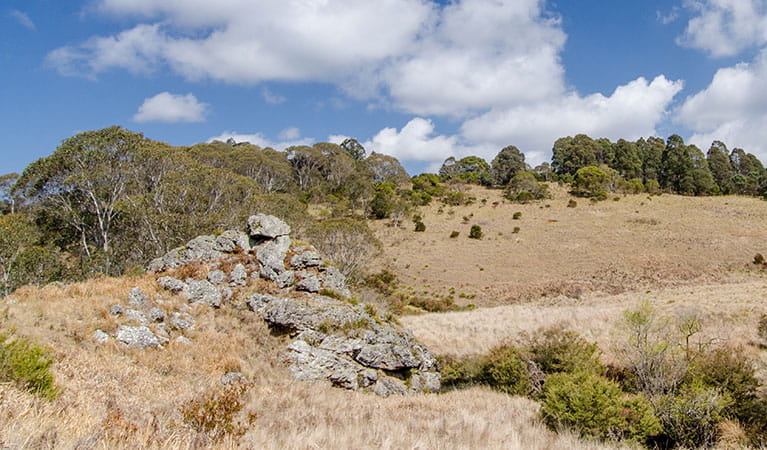
When you're exploring the beautiful mountains, rivers and bushlands of Werrikimbe National Park, you're on the traditional lands of the Dungutti Aboriginal People. Aboriginal groups continue to have an active role in the management of the park. There are a number of important sites in the park that show that Dungutti people are the original inhabitants of this land, including several stone arrangements and surface deposits of stone artefacts.
Thousands of species
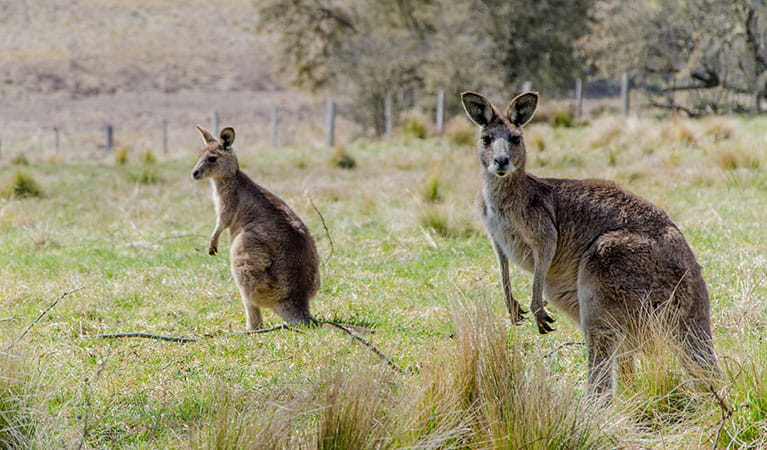
There are close to 1,000 plant species found in Werrikimbe, including nearly 30 that are listed as rare or threatened. The diverse landscapes of Werrikimbe are home to a wide range of wildlife including around 52 species of mammals, over 120 bird species and 48 species of reptiles and amphibians. You'll see bandicoots, eastern grey kangaroos and wallabies including the rare parma wallaby, sometimes seen around Brushy Mountain. You'll also find a range of forest birds such as eastern yellow robins, scarlet robins, grey and rufous fantails. If you're lucky, you might spot rare species such as the olive whistler, rufous scrub-bird and sooty owl.
- King Fern walking track King Fern walking track in Werrikimbe National Park near Wauchope is a great introduction to World Heritage-listed Gondwana Rainforests. A 2km loop, it also offers waterfalls and vibrant birdlife.
Abundant landscapes
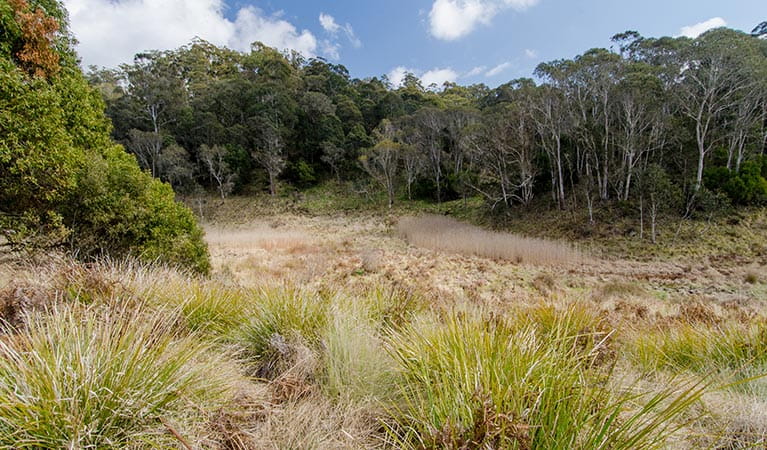
You'll find three different rainforest types; cool temperate, warm temperate and subtropical. The park also contains significant endangered ecological communities, like at Bishops Swamp and Racecourse Swamp. Head to Mooraback campground to see the snow gum woodland that is slowly regenerating from over 100 years of grazing.
Education resources (1)
What we're doing
Werrikimbe National Park has management strategies in place to protect and conserve the values of this park. Visit the OEH website for detailed park and fire management documents.

